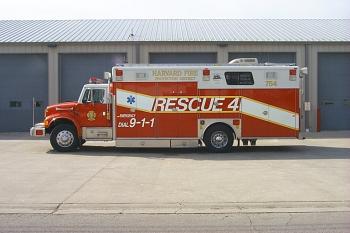NFPA 1670 Standard for Technical Rescue
The following is our interpretation of NFPA 1670 Standard for Technical Rescue as it relates to the Lifesaving Resources’ Water Rescue and Ice Rescue Awareness, Operations, and Technician level courses, as well as our Water Rescue and Ice Rescue Instructor Academy Programs.
by Gerald M. Dworkin

In February 2004, the National Fire Protection Association (NFPA) published NFPA 1670: Standard on Operations and Training for Technical Search and Rescue Incidents. The purpose of this standard is to minimize threats to rescuers while conducting operations at technical SAR incidents, and the standard deals specifically with identifying and establishing levels of functional capability for conducting technical rescue operations safely and effectively. Although these standards were designed for all types of Technical Rescue operations, they also address water and ice rescue operations.
These standards are intended to assist the Authority Having Jurisdiction (AHJ) to:
- Assess the technical rescue hazard within their specific response area;
- Identify the level of operational capability needed; and
- Establish operational criteria
As a responder to technical rescue incidents, the AHJ needs to determine the level of response the authority is compelled to provide. And, the AHJ must then plan for it, train for it, and allocate the necessary resources to manage the appropriate response at that level.
According to NFPA 1670, the AHJ shall establish levels of operational capability needed to conduct operations at technical SAR incidents safely and effectively, based on hazard identification, risk assessment, training level of personnel, and availability of internal and external resources. This standard also advocates the establishment of written Standard Operating Procedures (SOPs) consistent with one of these operational levels:
Awareness level: represents the minimum capability of organizations that provide response to technical SAR incidents.
Operations level: represents the capability of organizations to respond to technical SAR incidents, and to identify hazards, use equipment, and apply limited techniques specified in this standard to support and participate in technical SAR incidents.
Technician level: represents the capability of organizations to respond to technical SAR incidents, and to identify hazards, use equipment, and apply advanced techniques specified in this standard necessary to coordinate, perform, and supervise technical SAR incidents.
Once the operational level has been identified, the AHJ shall establish operational procedures consistent with the identified level of operational capability to ensure that technical SAR operations are performed in a manner that minimizes threats to rescuers and others. Once the appropriate level of operational capability has been determined, the AHJ must then provide for training in the responsibilities that are commensurate with the operational capability of the organization, and provide for the continuing education necessary to maintain all requirements of the organization’s identified level of operational capability.
In order to meet the organization’s identified level of operational capability, in addition to developing SOPs and providing necessary training for its personnel, the AHJ must ensure that equipment commensurate with the respective operational capabilities for operations at technical SAR incidents and training exercises is provided.
NFPA 1670 also defines the operational level protocols for various disciplines. Specifically, as NFPA 1670 relates to ice rescue, the following operational responsibilities should be met:
Operations level
- Recognizing the unique hazards associated with ice rescue operations.
- Identifying water and ice characteristics.
- Operating surface support equipment used in cold water or ice rescue operations.
- Procuring the necessary equipment to perform ice rescue operations.
- Recognizing and dealing with a victim’s hypothermia
Technician level
- Self-rescue unique to ice rescue.
- The reach, throw, row, and go rescue technique unique to ice rescue.
- The use of watercraft, specialty craft, and specialty equipment unique to ice rescue
NFPA 1670 does not require the AHJ to immediately purchase a lot of expensive equipment or assemble technician-level teams. There is nothing wrong with the authority training personnel and operating at the Awareness or Operations level, as long as they arrange for the response of external resources if they are not going to handle the SAR incident themselves. Emphasis on Awareness issues ensures that critical elements of the scene will be managed appropriately by all personnel, not just the technical rescue team. Safety issues are addressed, resource needs are identified, and the technical team can do the work instead of managing the scene. Therefore, all AHJs must conduct a threat assessment within its community and jurisdiction to assess the needs of the community and prepare its teams to the appropriate level of operational capability.


